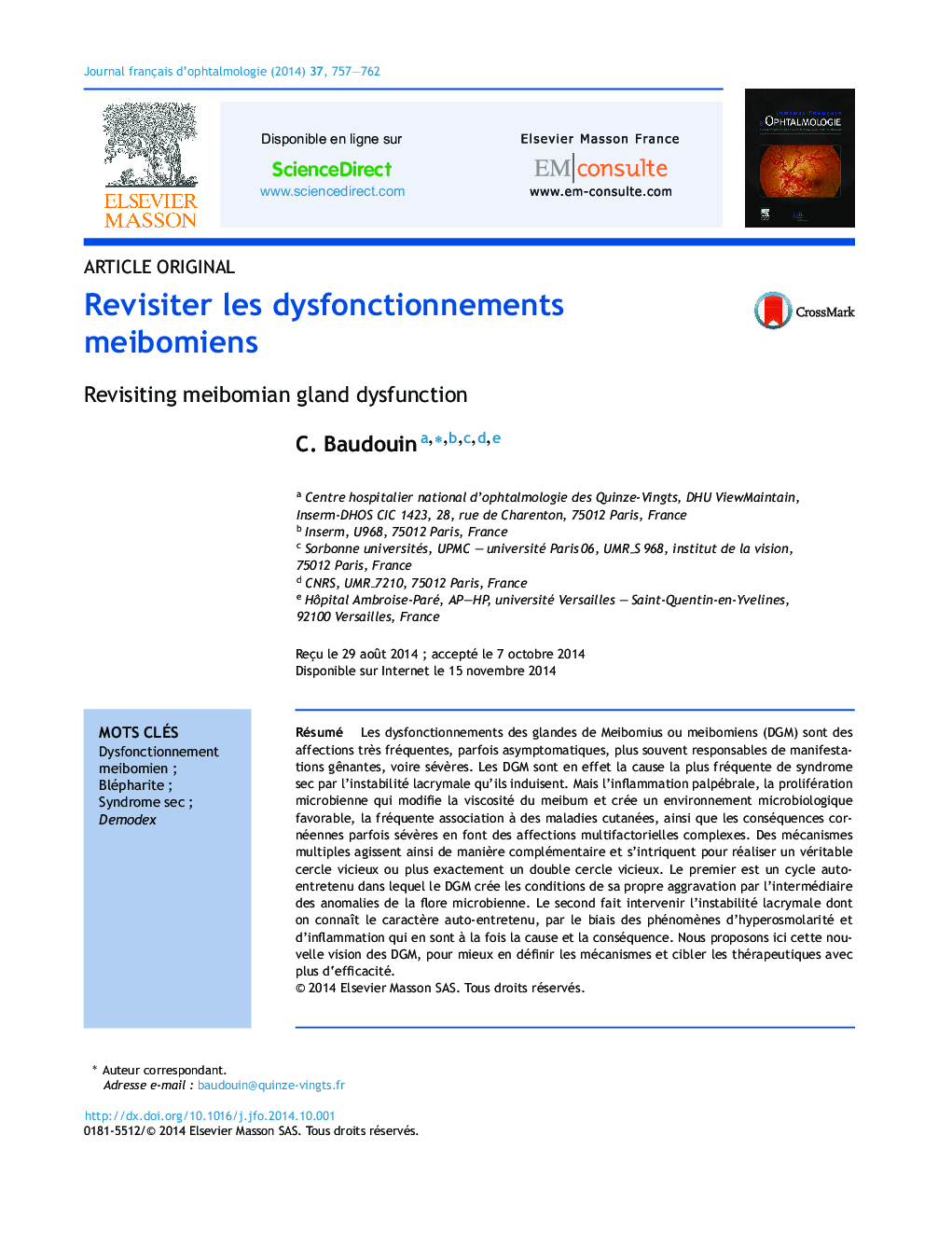| Article ID | Journal | Published Year | Pages | File Type |
|---|---|---|---|---|
| 4023169 | Journal Français d'Ophtalmologie | 2014 | 6 Pages |
Abstract
Meibomian gland dysfunctions (MGD) are frequent affections, sometimes asymptomatic, more often responsible for disabling, potentially severe, manifestations. MGD is indeed the most frequent cause of dry eye, through the induction of tear film instability. However, eyelid inflammation, microbial proliferation that modifies melting temperature of meibum, frequent association with skin diseases, as well as potentially severe corneal complications make them complex multifactorial disorders. Complementary mechanisms combine to actually result in a vicious circle, or more accurately a double vicious cycle. The first one is self-stimulated by the microbiological changes, which create their own conditions for MGD development. The second one is related to tear film instability that results from MGD and is also self-stimulated through hyperosmolarity and inflammatory phenomena, which are both consequence and cause of dry eye. We herein propose a new pathophysiological schema on MGD, in order to better identify mechanisms and more efficiently target therapeutics.
Related Topics
Health Sciences
Medicine and Dentistry
Ophthalmology
Authors
C. Baudouin,
